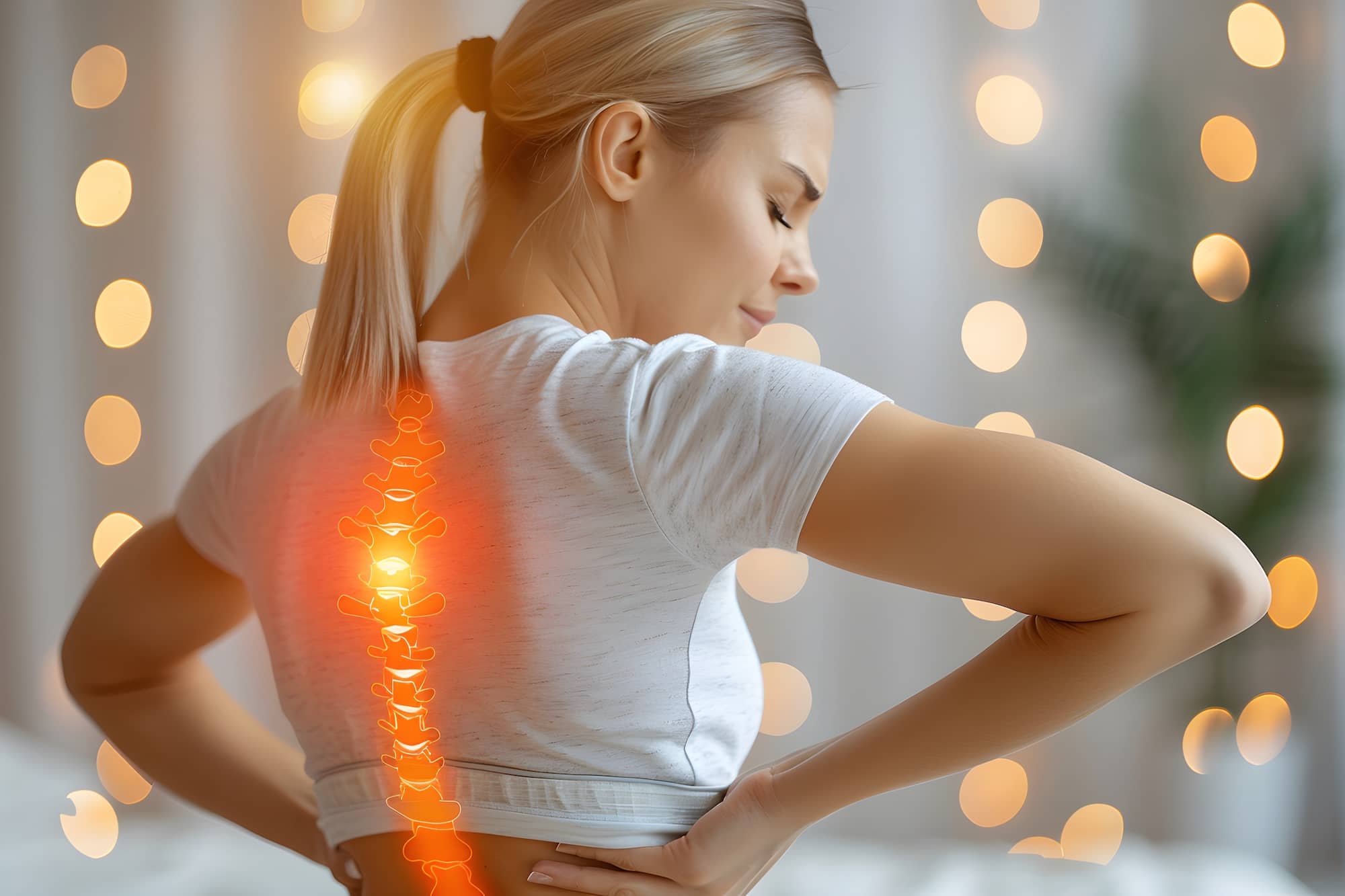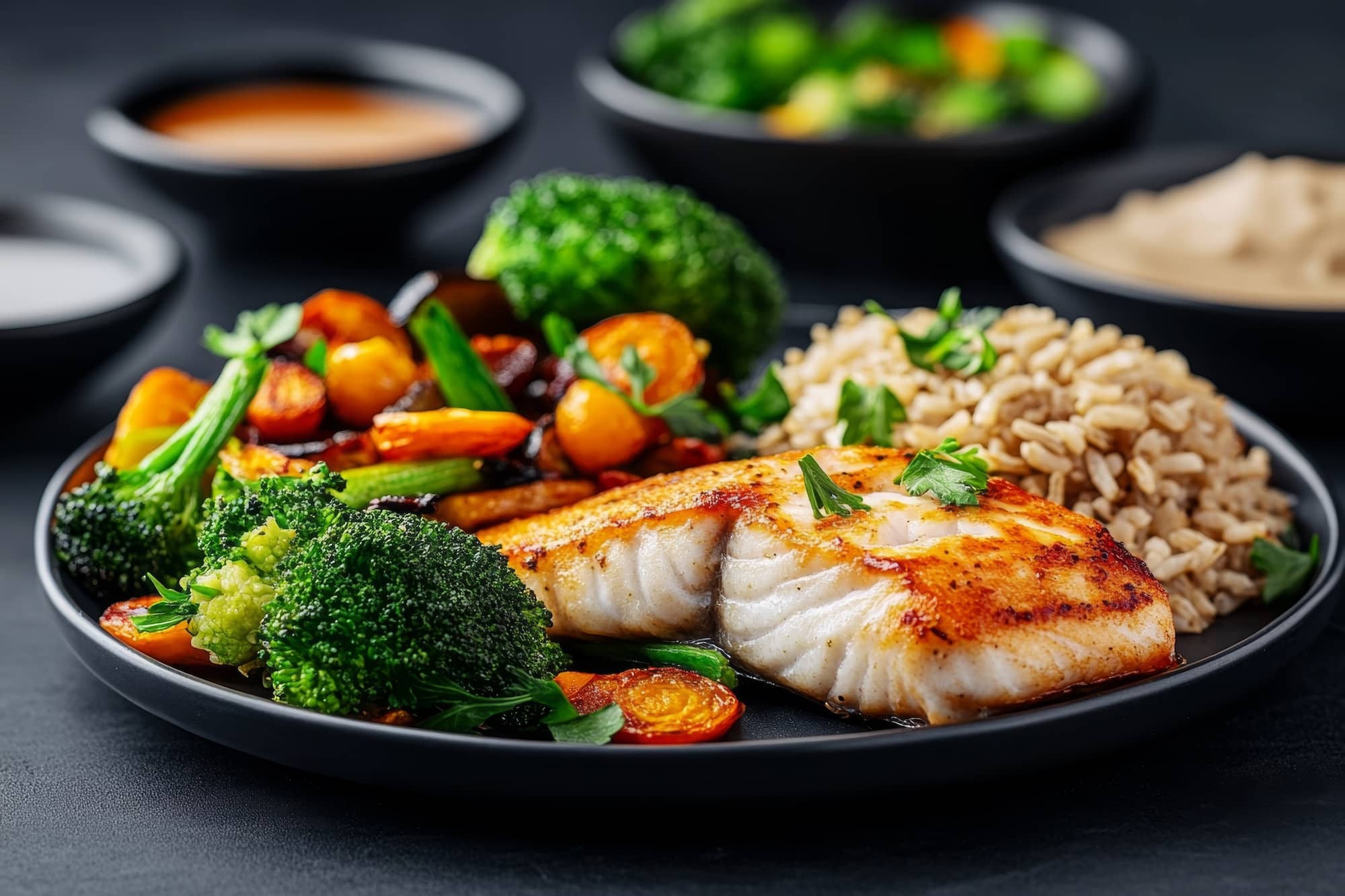Blog
Athletic Performance
Athletes are always looking for ways to gain a competitive edge, whether through strength training, nutrition, or recovery strategies. One often-overlooked advantage for athletic performance is chiropractic care.
Enhanced Performance and Mobility
Optimal spinal alignment and joint mobility are essential for peak performance. Misalignments, also known as subluxations, can limit range of motion, decrease flexibility, and impact biomechanics. Chiropractic adjustments help restore proper function, allowing athletes to move more efficiently and reduce the risk of strains and overuse injuries.
Injury Prevention and Faster Recovery
Sports put immense strain on the body, leading to common issues like muscle imbalances, joint stress, and spinal misalignments. Regular chiropractic care helps correct these imbalances, reducing the likelihood of injuries. If an injury does occur, chiropractic treatment promotes natural healing by improving circulation, reducing inflammation, and enhancing nervous system function.
Pain Management Without Medication
Many athletes rely on painkillers to push through discomfort, but this approach can mask underlying issues and lead to long-term damage. Chiropractic care offers a natural alternative for pain relief, addressing the root cause rather than just the symptoms. Through spinal adjustments, soft tissue therapies, and personalized treatment plans, athletes can experience lasting relief without dependency on medication.
Boosted Recovery for Young Athletes
Young athletes are still developing, making proper recovery crucial for their long-term health and performance. Chiropractic adjustments help the body recover faster by optimizing spinal health and reducing physical stress. Dr. Linds’ expertise ensures that young athletes receive the care they need to stay in top shape throughout their sports careers.
Train Smarter with Chiropractic Care
Whether you’re a baseball catcher, a track star, or a weekend warrior, chiropractic care can help you stay in the game longer and perform at your best. If you’re looking to enhance your athletic potential, Dr. Lind is here to help. Schedule a consultation today and take the next step toward peak athletic performance!
Click here to contact our Office or call (408) 263-8025
Winter Blues
As the colder months set in, many people experience a drop in mood, lower energy levels, and even symptoms of seasonal affective disorder (SAD). The shorter days and colder temperatures can take a toll on both physical and mental well-being. While light therapy, exercise, and a balanced diet are common solutions, one often-overlooked approach to beating the winter blues is chiropractic care.
The Spine-Mind Connection
Your spine plays a critical role in overall health, including mental well-being. Misalignments, or subluxations, in the spine can interfere with the nervous system’s ability to function properly. Since the nervous system controls mood regulation, chronic tension and spinal misalignment may contribute to feelings of stress, anxiety, and fatigue. Chiropractic adjustments help restore proper alignment, allowing the nervous system to communicate effectively and improving overall wellness.
How Chiropractic Adjustments Improve Mood
- Reduces Stress and Tension – Misalignments in the spine can lead to muscle tightness and tension, which contribute to feelings of stress. Chiropractic care helps release tension, promoting relaxation and mental clarity.
- Boosts Endorphins – Spinal adjustments stimulate the nervous system and may help increase the release of endorphins, the body’s natural mood-boosting chemicals. This can create a sense of well-being and help combat the sluggishness of winter.
- Enhances Sleep Quality – Poor sleep is a common issue in the colder months and can negatively affect mood. Chiropractic adjustments can relieve discomfort and help regulate sleep patterns, leading to more restful and restorative sleep.
- Supports Immune Function – The immune system is closely linked to mental and physical health. When your body is fighting off illness, it can leave you feeling drained and irritable. Regular chiropractic care can help optimize immune function, keeping you healthier and more energized during the winter months.
Stay Ahead of the Winter Blues
If you find yourself struggling with low energy or mood changes during the colder months, consider adding chiropractic care to your wellness routine. By keeping your spine aligned and your nervous system functioning properly, you can experience improved mood, better sleep, and a greater sense of overall well-being.
Schedule an adjustment today and give your body the boost it needs to take on the winter season with a renewed sense of energy and positivity!
Click here to contact our Office or call (408) 263-8025
Chiropractic & Fertility
Chiropractic & Fertility: How Spinal Alignment Supports Reproductive Health
Many couples struggling with fertility may not realize that spinal alignment plays a crucial role in reproductive health. The nervous system controls every function in the body, including the reproductive organs. When the spine is misaligned, particularly in the pelvis and lower back, it can interfere with nerve signals, disrupt hormone balance, and contribute to difficulties in conception.
The Connection Between the Spine and Reproductive Health
The spine houses the nervous system, which communicates with every organ, including the uterus, ovaries, and other reproductive structures. Misalignments, or subluxations, in the lower spine and pelvis can create tension and imbalances that may hinder reproductive function. By restoring proper alignment, chiropractic adjustments can help optimize the body’s natural ability to conceive.
How Chiropractic Care Supports Fertility
- Pelvic Alignment – A misaligned pelvis can lead to tension in the surrounding muscles and ligaments, restricting blood flow and nerve communication to reproductive organs. Chiropractic adjustments help create a balanced and open pelvic environment, increasing the chances of conception.
- Hormonal Balance – The nervous system regulates hormone production, which is essential for ovulation and a healthy menstrual cycle. Chiropractic care helps remove nerve interference, allowing the body to regulate hormones more effectively.
- Improved Blood Flow – Proper circulation to the reproductive organs is vital for fertility. Chiropractic adjustments can enhance blood flow by relieving tension and improving alignment in the spine and pelvis.
- Reduced Stress – Stress plays a significant role in fertility struggles, as high cortisol levels can disrupt reproductive hormones. Chiropractic care promotes relaxation, reduces tension, and supports overall well-being, helping to create a more favorable environment for conception.
Real Results: Chiropractic Success Stories
Chiropractic care has contributed to numerous successful pregnancies. We’ve seen cases where women struggling with fertility conceived after receiving chiropractic adjustments. By aligning the pelvis, hips, and spine, we helped optimize their body’s natural reproductive function, leading to positive outcomes.
Chiropractic Care: A Natural Approach to Fertility
If you or someone you know is facing fertility challenges, chiropractic care may be a valuable addition to your wellness routine. By ensuring the spine and nervous system are functioning at their best, you can support your body’s natural ability to conceive.
Schedule a consultation today to explore how chiropractic adjustments can help you on your journey to parenthood!
Click here to contact our Office or call (408) 263-8025
Heart Health
Heart Health & Chiropractic: The Surprising Connection
February is Heart Health Month, a time to focus on cardiovascular wellness and the steps we can take to keep our hearts strong. While diet and exercise are well-known factors in heart health, one often-overlooked contributor is spinal alignment. Proper spinal health plays a crucial role in circulation, nerve function, and overall cardiovascular well-being. Here’s how chiropractic care can support a healthier heart.
The Spine’s Role in Circulation
The spine houses and protects the central nervous system, which controls every function in the body, including heart rate and circulation. Misalignments in the spine, known as subluxations, can create nerve interference, disrupting signals between the brain and heart. This interference may contribute to issues such as poor circulation, increased blood pressure, and even heightened stress levels—factors that all impact heart health.
Chiropractic Care and Blood Pressure Regulation
Research has shown that spinal adjustments, particularly in the upper cervical spine, can help regulate blood pressure. A study published in the Journal of Human Hypertension found that a specific chiropractic adjustment to the atlas vertebra resulted in significant reductions in blood pressure, comparable to the effects of some blood pressure medications. By restoring proper alignment, chiropractic care may help support cardiovascular function naturally.
Reducing Stress for a Healthier Heart
Chronic stress is a major contributor to heart disease. When the body is under stress, it releases cortisol and adrenaline, which can increase heart rate and blood pressure. Chiropractic care has been shown to reduce stress levels by improving nervous system function and promoting relaxation. Many patients report feeling a sense of calm and balance after an adjustment, which can have positive effects on heart health over time.
Enhancing Circulation and Mobility
Spinal misalignments can lead to muscle tension, restricted movement, and poor circulation. Chiropractic adjustments help improve blood flow by relieving pressure on nerves and blood vessels. Better circulation means that oxygen and nutrients are more efficiently delivered throughout the body, supporting cardiovascular health and overall vitality.
Prioritize Your Heart Health This Month
This Heart Health Month, consider chiropractic care as part of your wellness routine. By ensuring your spine is properly aligned, you’re not only supporting a healthier nervous system but also promoting better circulation, reduced stress, and improved heart function.
Schedule a chiropractic visit today and take a proactive step toward a healthier heart and a healthier you!
Click here to contact our Office or call (408) 263-8025
Sleep Quality
Getting a good night’s sleep is essential for overall health and well-being, yet many people struggle with sleep issues. From tossing and turning to waking up with aches and pains, poor sleep can impact your energy, mood, and productivity. One often overlooked solution is spinal alignment, a key focus of chiropractic care. By maintaining a properly aligned spine, you can improve your sleep quality and set a positive tone for the year ahead.
The Spine and Sleep Connection
Your spine plays a crucial role in your body’s overall function, especially when it comes to sleep. The spinal column houses the central nervous system, which controls and coordinates every function in the body, including sleep quality. Misalignments in the spine, known as subluxations, can disrupt the nervous system’s ability to communicate effectively. This interference can lead to discomfort, pain, and even stress—all of which can prevent you from achieving restful sleep.
How Chiropractic Care Helps
Chiropractors specialize in identifying and correcting spinal misalignments through gentle adjustments. Here’s how this can improve your sleep:
- Relieves Pain and Tension: Misalignments can cause muscle tension, joint stiffness, and localized pain. Chiropractic adjustments help alleviate these issues, allowing your body to relax and rest more comfortably.
- Reduces Stress and Anxiety: A misaligned spine can contribute to heightened stress levels. Regular adjustments promote relaxation by restoring balance to the nervous system, helping you fall asleep more easily.
- Improves Circulation: Proper spinal alignment enhances blood flow and reduces pressure on nerves, supporting better oxygen and nutrient delivery throughout the body. This can help regulate sleep cycles and improve overall sleep quality.
- Encourages Healthy Sleep Posture: Many sleep problems stem from poor posture. Chiropractors can provide guidance on optimal sleeping positions and recommend supportive pillows or mattresses tailored to your needs.
Setting a Positive Tone for 2025
By prioritizing spinal health, you’re investing in a foundation for better sleep and overall wellness. Improved sleep quality leads to better energy, focus, and resilience—key factors for achieving your goals in the year ahead. Consider adding regular chiropractic visits to your self-care routine to address underlying issues and keep your spine in optimal condition.
Start the year off right by giving your body the care it deserves. When your spine is aligned, your body can rest, recover, and thrive. Make 2025 the year of better sleep and better health!
Click here to contact our Office or call (408) 263-8025
Butt pain
Butt pain can interfere with your daily life, making it difficult to sit, walk, or perform routine tasks. This discomfort often originates from the lower back, hips, or sciatic nerve, and addressing it requires a targeted approach. Dr. Lind specializes in musculoskeletal health and provides effective, non-invasive solutions for managing and eliminating butt pain.
Common Causes of Butt Pain
Several factors can contribute to pain in the gluteal region. One frequent culprit is piriformis syndrome, where the piriformis muscle compresses the sciatic nerve, leading to pain that radiates down the leg. Sciatica, caused by irritation or compression of the sciatic nerve, is another common condition. Other causes include sacroiliac joint dysfunction, lower back issues like herniated discs, and muscle strains from overuse or injury.
How Chiropractic Care Helps
Chiropractors use a holistic approach to identify and treat the root cause of butt pain rather than just addressing symptoms. Through a thorough evaluation, they determine whether your pain stems from misaligned joints, nerve irritation, or muscle dysfunction.
- Spinal Adjustments
Misalignments in the lower back or sacroiliac joints can contribute to butt pain. Chiropractors perform spinal adjustments to restore proper alignment, reduce nerve pressure, and improve joint function. - Soft Tissue Therapy
Chiropractors often incorporate soft tissue techniques, such as myofascial release, to address muscle tension or spasms in the gluteal region. These therapies help reduce pain and improve mobility. - Stretching and Strengthening Exercises
Targeted exercises enhance flexibility and strengthen the muscles supporting the hips and lower back. Chiropractors guide patients through specific routines to address imbalances and prevent future issues. - Posture and Ergonomic Advice
Poor posture or prolonged sitting can exacerbate butt pain. Chiropractors offer personalized advice on posture and workstation ergonomics to minimize strain on the affected areas. - Lifestyle Modifications
For long-term relief, chiropractors may recommend lifestyle adjustments, including proper exercise routines and dietary changes to support musculoskeletal health.
Benefits of Chiropractic Care
Chiropractic care offers a drug-free, non-surgical solution to butt pain. By addressing the underlying cause, it provides lasting relief while improving overall function and mobility. Patients often report significant improvements in their quality of life after consistent treatment.
If butt pain is holding you back, a chiropractor can help you find relief and regain control of your daily activities. Take the first step toward a pain-free life with chiropractic care!
Click here to contact our Office or call (408) 263-8025
A Balanced Diet
Maintaining a balanced diet plays a vital role in supporting your overall well-being. However, certain foods can increase inflammation, cause chronic diseases, and harm your health. By limiting or avoiding these items, you can improve your body’s function and feel your best. Here’s what to watch out for:
10 Foods to Avoid for Better Health
1. Cut Out Processed Meats
You expose yourself to high levels of sodium, saturated fats, and harmful preservatives like nitrates when you eat processed meats like bacon, sausage, or deli cuts. Studies link these foods to heart disease and certain cancers.
2. Avoid Sugary Breakfast Cereals
When you start your day with sugary cereals, you set yourself up for blood sugar spikes and crashes. These cereals lack nutrients and increase your risk of type 2 diabetes and obesity.
3. Skip Refined Grains
Eating white bread and pastries floods your body with refined grains stripped of fiber and nutrients. These foods spike blood sugar and contribute to weight gain and inflammation.
4. Say No to Packaged Snacks
Packaged snacks, including chips, crackers, and cookies, pack in unhealthy fats, sugars, and additives. By indulging frequently, you increase inflammation and your risk of chronic disease.
5. Cut Out Sugar-Sweetened Beverages
Sodas and sweetened teas overload your body with sugar and provide no nutritional benefits. Drinking these regularly contributes to weight gain, metabolic disorders, and type 2 diabetes.
6. Skip Fried Foods
Eating fried foods means consuming calorie-dense meals full of unhealthy fats. Frying also produces harmful compounds that elevate your risk of heart disease and certain cancers.
7. Avoid Non-Dairy Coffee Creamers
Non-dairy creamers often include trans fats and added sugars, which harm your heart and promote inflammation. Choose natural creamers to keep your coffee healthy.
8. Pass on Pre-Made Dough and Baked Goods
Pre-made doughs and commercial baked goods sneak in trans fats and sugars that damage your heart and overall health. Making your own ensures healthier options.
9. Ditch Artificial Sweeteners
Studies suggest artificial sweeteners disrupt metabolism and gut health, making you crave more sweets and potentially leading to weight gain.
10. Limit High-Sodium Foods
Canned soups, processed foods, and salty snacks overload your system with sodium, raising your blood pressure and heart disease risk. Opt for low-sodium options instead.
Focus on Whole Foods By swapping out these foods for healthier, whole alternatives, you can reduce inflammation, improve energy levels, and protect yourself from chronic diseases.
Maintain a balanced diet. Your body will thank you for it!
Click here to contact our Office or call (408) 263-8025
Brain-to-Body Communication Through the Spine
Your spine plays a vital role in connecting your brain to the rest of your body. This connection powers every movement, sensation, and function you experience. When the spine is properly aligned, signals flow freely between the brain and body, keeping you healthy and energized. Chiropractic care focuses on maintaining this alignment to enhance brain-to-body communication and overall well-being.
The spine houses and protects the spinal cord, which serves as the main pathway for nerve signals. These signals control everything from muscle movement to organ function. When misalignments, also known as subluxations, occur, they can interfere with these messages. This disruption can lead to pain, stiffness, fatigue, and even impaired organ performance. Chiropractic adjustments correct these misalignments, restoring clear communication and helping your body function as it should.
Think of your nervous system as a highway. Misalignments create traffic jams that slow down or block signals. Chiropractic care removes these blockages, allowing signals to travel smoothly. This improved communication helps the body heal itself, reduces inflammation, and promotes better balance and coordination.
Good brain-to-body communication also boosts your immune system. A properly aligned spine allows the nervous system to respond quickly to threats, helping your body fight off illness and recover faster. Many patients report feeling more resilient and less stressed after regular adjustments.
Athletes, office workers, and busy parents alike benefit from optimized spinal health. Whether you’re lifting weights, sitting at a desk, or chasing kids around the yard, proper alignment supports strength, flexibility, and endurance. Chiropractic care keeps your spine in top condition so you can stay active and pain-free.
Stress is another factor that impacts brain-to-body communication. Tension often builds up in the neck and shoulders, putting pressure on nerves. Regular chiropractic adjustments release this tension, improving blood flow and calming the nervous system. As stress decreases, focus and mental clarity improve.
Chiropractic care offers more than pain relief—it provides a foundation for lasting health. By improving brain-to-body communication, adjustments empower your body to function at its best. Start prioritizing your spine’s health today, and experience the difference a well-aligned body can make.
Schedule your appointment now and take the first step toward a healthier, more vibrant you!
Click here to contact our Office or call (408) 263-8025
Health Goals for the New Year
It’s the perfect time to set fresh health goals and prioritize your well-being. Whether you want to exercise more, lose weight, or simply feel better in your daily life, chiropractic care can help you succeed. By focusing on improving your body’s function, chiropractic adjustments make movement easier, reduce pain, and help you achieve lasting results.
Many people start the year motivated, but physical discomfort or stiffness can quickly derail even the best intentions. That’s where chiropractic care steps in. Regular adjustments enhance spinal alignment, improve joint mobility, and optimize nervous system function. When your body functions at its best, pain naturally decreases, and energy levels rise. This improvement makes it easier to stick with exercise routines and other healthy habits.
Imagine starting your mornings pain-free, ready to tackle workouts, yoga sessions, or long walks without hesitation. Chiropractic care reduces tension, improves flexibility, and supports proper posture, allowing your body to move fluidly and comfortably. Small changes, like maintaining better posture or stretching consistently, create a foundation for bigger health transformations.
Chiropractic care also helps prevent injuries that can sideline your progress. Misalignments often lead to imbalances that put extra strain on muscles and joints. Regular adjustments correct these issues, keeping your body balanced and resilient. With fewer aches and pains holding you back, it becomes easier to maintain momentum and stay active throughout the year.
Additionally, chiropractic adjustments support mental clarity and stress relief. As your body relaxes, tension fades, and you feel more focused and positive. When your mind and body work together harmoniously, you’re better equipped to set and achieve meaningful health goals.
This year, let chiropractic care be your partner in building a healthier lifestyle. Start with a simple step—schedule an adjustment to assess your current alignment and create a personalized plan for success. As function increases, pain decreases, opening the door to greater possibilities and a more vibrant life.
Don’t let discomfort keep you from reaching your full potential. Embrace the new year with confidence, knowing chiropractic care can help you feel and move better every day. Make this year the one where you achieve your health goals and thrive!
Click here to contact our Office or call (408) 263-8025
Pain Free Living Is the Best Gift
Living without pain is one of life’s greatest treasures. When your body feels strong and balanced, you’re free to enjoy each day to its fullest. Chiropractic care offers a natural and effective path to pain-free living, making it one of the most valuable gifts you can give yourself or your loved ones.
Chiropractic Care Relieves Pain Naturally
Pain, whether caused by stress, injury, or poor posture, can disrupt your daily routine and limit your quality of life. Many people rely on medications to mask the symptoms, but chiropractic care addresses the root cause. By realigning your spine and relieving pressure on your nerves, chiropractic adjustments restore proper function to your body. This allows pain to decrease naturally, without the need for pharmaceuticals or invasive procedures.
Improved Mobility Means a Better Life
Pain doesn’t just hurt; it restricts your ability to move, work, and play. When your body is free from discomfort, simple activities like playing with your kids, taking long walks, or completing household tasks become enjoyable again. Chiropractic care improves joint mobility, muscle function, and overall flexibility. This ensures that you can keep doing the things you love without worrying about pain holding you back.
Prevent Pain Before It Starts
One of the greatest benefits of chiropractic care is its ability to prevent future issues. Regular adjustments maintain spinal health, reduce inflammation, and prevent the small misalignments that lead to chronic pain. By staying proactive with your care, you can avoid the wear and tear that might otherwise slow you down.
A Thoughtful Gift for Loved Ones
If you’ve experienced the benefits of chiropractic care, consider sharing it with others. Helping a friend or family member find relief from pain could change their life. A consultation or adjustment could be the first step toward their journey to pain-free living.
This season, prioritize what truly matters: your health and happiness. Chiropractic care offers a path to living pain-free, giving you the freedom to embrace every moment without discomfort. Whether for yourself or someone you care about, the gift of a healthy, pain-free body is one that keeps giving. Schedule an appointment today and start experiencing the joy of living without limits!
Click here to contact our Office or call (408) 263-8025









